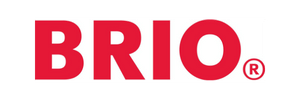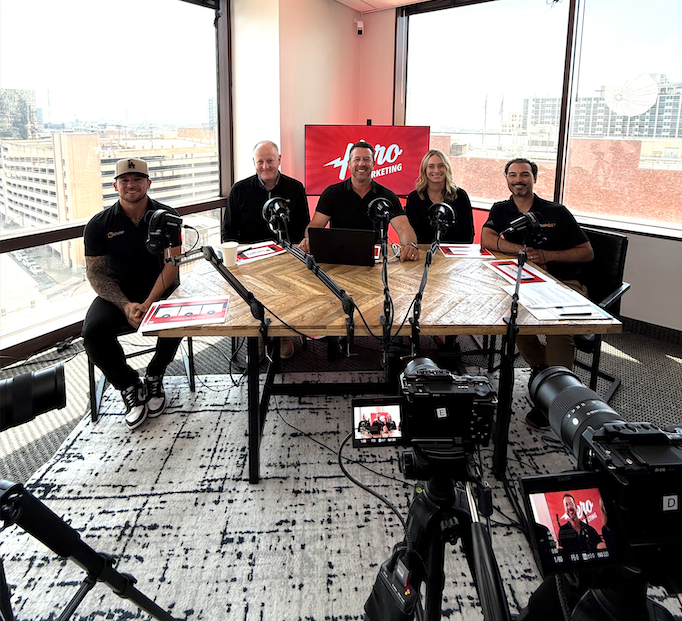Status, Dependency, Friendship: Fostering Lifetime Loyalty
Loyalty is not just a question of pure financial benefit, nor is it solely emotional or a product of habit. It stems from one encompassing metric: value.

As people, we tend to love making things seem more complicated than they are.
As marketers, this can quickly cloud our understanding of even the simplest concepts, like loyalty. Loyalty is not just a question of pure financial benefit, nor is it solely emotional or a product of habit. It stems from one encompassing metric: value.
When your customer makes a purchase, they exchange their time and effort, through money, to receive a product, service, or experience that appears to be of greater value. If your customers believe the amount they paid is less than what you provide in return, they will reward you with loyalty, to a) repay you for your generosity, while b) allowing themselves to gain further value in the future. More value creates stronger loyalty.
This means that all loyalty-building efforts contribute to one goal: increasing the value of your customer’s experience with your brand, as cost-effectively as possible.
Today, we’re going to explore how exactly you should go about it.
This article is part of a 4-part series based on concepts from The 48 Laws of Power by Robert Greene. If you haven’t given it a read yet, we’d highly recommend it. It’s linked at the end, along with the other parts of the series.
Let’s get started.
WORK ON THEIR HEARTS AND MINDS
An emotional appeal alone is enough to make a profit. Scam ads offering ”clear skin in 14 days” or ”the hidden method to burn belly fat in your sleep” are not based on any sound logic. Yet, the ad space they take up is not cheap, meaning someone is making a lot of money from them. Why do people click? For them, emotions fuel everything, and those ads do a great job of stirring up just the right ones.
To produce any loyalty, however, emotions must be combined with logic. Emotional appeals are great for churn-and-burn businesses, but you need to provide genuine value if you want people to stay. Create an objectively compelling sales argument before you add the emotional appeal.
If you’re trying to improve any aspect of your life, you will understand the difference between something feeling good and something feeling right. It feels good to watch TV for an hour, and not as good to go lift weights instead, but when you miss a workout, it feels wrong. Hitting the gym just feels right.
To be profitable, your brand has to make customers feel good. But if you can make them also feel right when buying from you, you’ve won the game. The good news is, this is simple. Create genuine values and a compelling mission to base your brand around, then target customers whose beliefs align with yours. As long as your product works, it will be hard not to succeed.
POSE AS A FRIEND
Word-of-mouth marketing is, and always will be, the most effective form of marketing. Why? Because we trust our friends, above everyone else. Take advantage of this; position your brand as a friend to your customers and you will quickly build trust.
To start, give your brand a face. People befriend other people, not logos or diagrams. Use your CEO, a team of influencers, a mascot, or another figure to publicly represent your company. Think of Bob from Bob’s Discount Furniture. Having a face makes marketing far easier; you now have a real person to present your products and connect with your customers.

Next, put effort into making your customers happy. Give them gifts, like special offers or free products, that encourage them to shop more with you. Write handwritten notes instead of emails to thank your newest ones. Provide great customer service; be responsive and understanding. And always appear transparent. Often, a few gestures of honesty are all you need to make yourself known for it, and sharing lovable flaws is a great way to build trust without getting yourself under fire. If you ever need a favor from your customers, do not ask for much and do not ask often. It should feel easy and well-earned for them to support you.
Finally, understand that words, on their own, are weak in building strong relationships. Anybody can write a nice email. Actions and gestures, like handwritten notes, are strong by comparison and will often speak for themselves.
WORK AS A SPY
No, not like Facebook.
We just mean that you should never pass up a chance to learn about your customers. Find out their preferences, hobbies, any information you wouldn’t otherwise know, and use any useful facts or patterns you find to optimize your customer experience.
Engaging with customers, then using that information to improve their experience is the best way to show them you care. Even if they don’t notice the effort you put in, it’s powerful to understand what they want, and what they don’t; you can predict what will push them to stay with you and what will push them to leave. When your customers expect pain or annoyance and you provide pleasure instead, you instantly win their hearts. And when you win their hearts, loyalty always follows.
ELEVATE YOUR STATUS
Wouldn’t you love it if customers flaunted your products solely to show off the logo?
The good news is, you don’t have to be a designer brand to get customers to treat you like one. Combine shared values with a few clever tactics, and your customers will be happier to represent you than any high-tier clothing line. Greg O’Gallagher’s fitness brand, Kinobody, is a great example of a brand with a fiercely loyal following, and we think his tactics can be useful to any business. Let’s unpack some of them.
Start a club. Exclusivity is the key to high status. By supporting you, your customers should gain entrance into an exclusive “club” of supporters. It doesn’t have to be too formal, but they should still feel that they become part of something bigger than them. Unite them in support of your brand, highlight the great lifestyle that your club experiences through your brand, and find a fun name for them to make it official. O’Gallagher dubs his audience the “Kino Warriors”.
Publicize your high standards. O’Gallagher likes to give his audience behind-the-scenes peeks at his newest products. He highlights the number of samples his team rejects, the amount of thought he puts into his programs, and never misses a chance to show his audience the effort he puts into their experience. So, make sure everyone knows that your business has only the best ingredients. Or customer service. Suppliers. Packaging. Anything. You just need to make a show of creating a high-quality customer experience. Associate your brand name with high quality; convince your customers that you will go to great lengths to get the best for them.
Create scarcity. It’s simple. If there’s a demand for something, and the availability drops, people automatically value it more. If you want to build tense demand for something, market it heavily but sell a small quantity at first; this should sell out within hours. Later on, re-release a massive quantity of the same product. This is where the revenue will pour in. Not only will everyone who couldn’t get in on the first release want to come back, but publicizing the quick sellout will make everyone else value and desire the product even more.
Brand everything. This is the final step for a reason. It only works if the others are done properly. If your customers love you, make your mark on everything you touch. O’Gallagher slaps “kino” on nearly everything his brand does: Kino Clothing, his clothing brand; Kino Vision, blue-light-blocking glasses; Kino Octane, his pre-workout; we could go on. He’s even popularized the “kino fold” as a part of his protein pancake recipe. All of the above; parts of the “kino lifestyle”.

A lot of people will laugh at such devotion to his business, but the extravagant branding literally turned “Kino” from a funky prefix into a desirable lifestyle in the eyes of his audience. If people are mocking you from the sidelines, know that it simply means you are noticeable. After all, if you are so visible to your opposition, so worthy of their time, imagine what you could do with people who are already on your side.
CREATE A LABYRINTH: EASY TO ENTER, TOUGH TO EXIT
Everybody knows someone who’s up to their neck in the Apple ecosystem. Maybe it’s you.
It’s often confusing to those outside the brand. Why are people so rooted in Apple products that they will not buy anything else? Why do customers complain so often and still keep buying?
Here’s our take: An impressively easy and seamless experience unites all of Apple’s products, providing something great that no competitor can match. This builds intensive power, which hinges on one unique ability to set you apart. The amazing user experience causes many iPhone owners to buy the whole Apple lineup, basing their lives around it, and it is here where extensive power is created. The brand intertwines itself so deeply into its customers’ lives that the menace of removing it outweighs any benefits an alternative may offer. Balancing intensive and extensive power, Apple ensures that there is no practical alternative for its customers.
Take stock of your business’ power. What key advantage do you hold over your competition? What makes your solutions different? How much do your customers rely on your products? How much of your customers’ lives do you hold influence in? If you answered “not much” or “not sure” to any of those, you’ve just uncovered a gap in your potential. Let’s find a way to fill it.
INTENSIVE POWER: APPEARANCE IS REALITY
Much of your intensive power-building can be accomplished through a clever marketing push. If you’ve already got something that sets you apart from the competition, start with that. If you don’t, add something that will.
Build a new feature. The most obvious, but most difficult. If you come up with something that could make your product stand out, try it. Ask your customers if they would appreciate the feature, or center it in a test ad campaign, to gauge the demand and possible returns.
Add a free prize. You don’t have to go through intense R&D to make your products stand out. A free prize is a small, seemingly minor addition that still adds a ton of value to the product. Think of the plastic toys in boxed cereal, or the rewards points on a credit card. Often, competitors will be focused on slow-moving, hard innovations, meaning you can quickly grab the market’s attention, and dollars, with a clever free prize.
Lead with strong values and a mission. This is arguably the only option that secures itself against copycats. Spend time designing values and an inspiring mission to represent your brand; market to the customers that believe in the same things that you do. People are driven by their emotions; they would rather buy from someone who can make them feel good about their purchase than someone who can deliver a great solution. Let your customers feel like they embody your values and support your mission by buying from you, and you will see success.
Do not attempt to make your product appealing solely by lowering the price. Getting into a price war--especially with established competitors--will ruin quality, tank your margins, and disappoint you, your competition, your investors, and your customers in one ludicrous stroke.
We’d recommend that you innovate instead, it’s far more sustainable.
The marketing push from earlier: Lead with whatever makes you stand out. Create headlines like: We are the only brand that can do X. Want X? We got you. Customers that believe X will stand with us. Make sure that your customers know that they receive a uniquely great experience from you; that they cannot get your headlining feature from anybody else. Relying on one main feature to sell yourself will force you to heavily invest in it, which will help both your intensive power and future marketability.
So, write your copy in the way that only you can; show your customers the features, values, and personality that only your brand has. Create a personality and write everything with it in mind.
Invest in appearing uniquely great, and your customers will stay.
EXTENSIVE POWER: SELL A PRODUCT, DELIVER A LIFESTYLE
You must move customers from your main product to your collection to a lifestyle to fully anchor yourself into their lives.
So, make it as easy as possible for customers to fill their lives with your brand.
Provide extensive resources. Create a library of content to serve two purposes: strengthening your hold on current customers and luring in new ones. Current customers will love having help to optimize their experience, and establishing thought leadership is a great way to build trust with new leads. In both cases, people will come to rely on you for information, and you will scoop up more and more mindshare as you grow.
Sell a whole product. When your customers buy from you, they are not paying for your product. They pay for an outcome. Identify the outcome that your customers are paying for; use this to brainstorm additional products and services that you can sell. In the end, you should be selling an entire lineup, like Apple does, that allows your customers to find their desired outcome, solely through you.
Create a community. Find where your niche(s) hang out, online or otherwise, and set up shop. Create a Facebook group, forum, recurring event, or any other space where customers can talk with each other and bond over your brand. Set up challenges and activities that revolve around your products, reward active customers, gather feedback, and place your brand at the center of it all. Even if they stop loving your products, many customers will stay with you just for the community you provide them with.
Remember to root your intensive and extensive power in the positives: Great features, convenience, an amazing whole solution, and a love for your brand.
If your customers do discover it’s inconvenient to leave, they shouldn’t even care.
ENTER CAREFULLY, DON’T MAKE A MESS
The number one rule for building a habit is making it easy. So, make your business easy.
No matter how revolutionary your product is, or how compelling your marketing, you will encounter serious resistance if your product commands a massive change in routine. Loyalty has to be seamless; it should not feel forced or rushed.
Preaching change is fine. To sell anything, you have to convince your customers that what they have is inadequate, while showing them how amazing your new solution is. But when selling change, you must avoid practicing what you preach if you want to maximize appeal. This means you must ensure that your solution disturbs as little of your customers’ lives as possible. Be patient, and do not upsell too quickly. You don’t want to scare them away. If you’ve built up an effective whole product, they will come to depend on you, on their own. This is the best way; it allows you to play for loyalty in the long-term while letting customers feel secure and in control.
BE UNPREDICTABLE
This does not mean you should be unreliable. Always deliver what you promise, stick to your values, and place the mission first.
However, do not hesitate to change up any other aspect of your business. Boring your customers with the same marketing, same loyalty rewards, and the same product lineup is the most overlooked way to send them packing.
“Understand: People feel superior to the person whose actions they can predict. If you show them who is in control by playing against their expectations, you both gain their respect and tighten your hold on their fleeting attention.
— Greene
Most people don’t want to associate with, let alone buy from, those whom they view as inferior. Avoid this by keeping your business on its feet; never stagnate. To build loyalty, you cannot bore your customers. Any reason for them to leave is one reason too many.
To succeed in today’s marketplace, you have to change how you think about loyalty. It’s all based on value; the brand with the most valuable experience will always win. The relationship-centric era is bringing this to light more than ever before.
So, before you consider what you can get out of your customers, make sure you’ve thought through all the value you can give them.
They deserve it.
LINKS
Attention is Everything: Winning the Crowd With Great Publicity
Patience, Perception, Pressure: How to Utilize Time
Stand Out From the Rest: Creating a Great Reputation
Read more insights
-min.png)
Get expert insights for real mail campaigns
Everything you need to launch, run and scale handwritten card mail campaigns. Subscribe today!
































Ready to create your first magic moment?🚀
Start using IgnitePOST today. It's free to signup!
No contracts, no commitment and unbelievable support.
.svg)







.png)